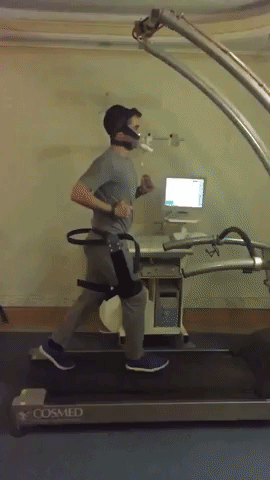In this paper, we present a new perspective to design an unpowered exoskeleton for metabolic rate reduction in running. According to our studies on human biomechanics, it was observed that having a torsional spring which applies torque as a linear function of the difference between two hips angles (d-angle), compared to a local spring which applies torque as a function of hip angle (h-angle) provides a better condition for hip moment compensation, and consequently metabolic rate reduction. Accordingly, a new type of unpowered exoskeleton device for realization of this idea was designed, and a prototype of this exoskeleton was constructed. This exoskeleton was tested on ten healthy active subjects for running at 2.5 m s–1. In this experiment, 8.0 ± 1.5% (mean±s.e.m.) metabolic rate reduction (compared to the no-exoskeleton case) was achieved.

